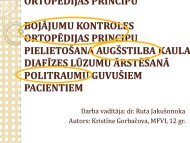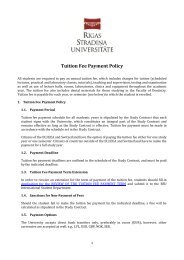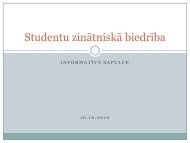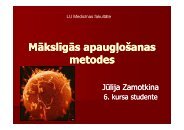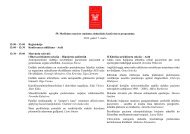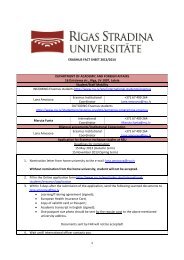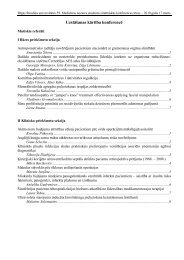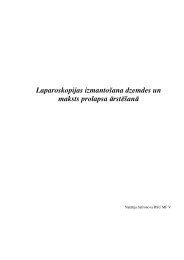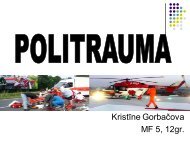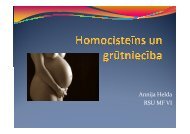History of Latvia: a Brief Survey
History of Latvia: a Brief Survey
History of Latvia: a Brief Survey
- No tags were found...
Create successful ePaper yourself
Turn your PDF publications into a flip-book with our unique Google optimized e-Paper software.
During the post-war occupation period, <strong>Latvia</strong> was one <strong>of</strong> fifteen Soviet republics. Power in<strong>Latvia</strong> belonged entirely to the Communist Party <strong>of</strong> the Soviet Union, which also includedthe Communist Party <strong>of</strong> <strong>Latvia</strong> (Latvijas Komunistiskā partija). Other political parties ormovements were prohibited. The first leader <strong>of</strong> the Communist Party <strong>of</strong> <strong>Latvia</strong> during thepost-war period was Jānis Kalnbērziņš (1893-1986). Shortly after the end <strong>of</strong> the Second WorldWar, the Communist Party and its structures gained control over all <strong>of</strong> <strong>Latvia</strong>. No important<strong>of</strong>ficial could be confirmed in <strong>of</strong>fice without the approval <strong>of</strong> the communists.Rīga in the 1950s.On 25 March 1949, more than 44 000 people mostly ruralresidents were deported to Siberia in a sweeping repressiveaction. Deportees included people who were considered toowealthy for the Soviet regime, and those who had supported theanti-Soviet resistance movement — the national partisans. Theirproperty was confiscated, which in many cases was a simple case<strong>of</strong> plunder.Sources <strong>of</strong> Soviet history, including documents from the USSRMinistry for State Security (KGB) suggest that around 190 000people suffered reprisals for being hostile to the Soviet regimefrom 1940 to 1953 (Stalin’s era), which constitutes approximately 10% <strong>of</strong> <strong>Latvia</strong>’s post-warpopulation. The reprisals subsided following the death <strong>of</strong> Stalin, and after 1955 some <strong>of</strong> thoseexiled to Siberia could return to <strong>Latvia</strong>. At home, however, they were still faced with problems:they could not find work, a place to live, gain an education, or travel abroad. Generally thesepeople were forced to live with constant insult to their reputation and dignity.Forced collectivisation. A single-housefarm being included in the collectivefarm (kolhoz) in Zemgale, 1951.An extensive Russification campaign began in <strong>Latvia</strong> and many administrative obstacleswere created to hinder the use <strong>of</strong> the <strong>Latvia</strong>n language.39



